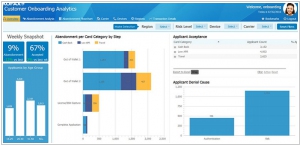Bluebeam vs Kofax
June 05, 2023 | Author: Michael Stromann
4

The end-to-end digital workflow and collaboration solution trusted by over 1 million AEC professionals worldwide. Revu delivers award-winning PDF creation, editing, markup and collaboration technology designed for AEC workflows. Drive project efficiency by utilizing markup data across the entire project lifecycle, and streamline workflow processes to increase productivity.
6

Kofax Intelligent Automation software platform helps organizations transform information-intensive business processes, reduce manual work and errors, minimize costs, and improve customer engagement. We combine RPA, cognitive capture, process orchestration, mobility and engagement, and analytics to ease implementations and deliver dramatic results that mitigate compliance risk and increase competitiveness, growth and profitability.
Bluebeam and Kofax are both software solutions that cater to different aspects of document management and collaboration. The key differences between Bluebeam and Kofax can be summarized as follows:
1. Functionality: Bluebeam is primarily known for its robust PDF editing, markup, and collaboration capabilities. It offers tools for creating, editing, and reviewing PDF files, as well as features for project communication and document organization. Kofax, on the other hand, focuses on intelligent document capture and workflow automation. It enables organizations to automate the capture, extraction, and processing of data from various sources, such as paper documents, emails, and digital files.
2. Target Market: Bluebeam is often used in industries such as architecture, engineering, and construction (AEC), where PDF documents play a crucial role in project management and collaboration. Its features cater to the specific needs of professionals in these fields. Kofax, on the other hand, has a broader target market that includes organizations across various industries that deal with high volumes of documents and require automated data extraction and workflow management.
3. Integration Capabilities: Bluebeam offers integrations with popular design and project management software, enabling seamless collaboration and document exchange between different applications. Kofax, on the other hand, excels in integrating with enterprise content management (ECM) systems, business process management (BPM) platforms, and other back-end systems to streamline document-centric workflows.
4. Focus on Automation: Kofax places a strong emphasis on process automation, leveraging technologies such as machine learning, artificial intelligence, and robotic process automation (RPA). It enables organizations to automate repetitive manual tasks, reduce errors, and improve operational efficiency. Bluebeam, while offering collaboration and markup features, is not primarily focused on automation.
See also: Top 10 RPA Software
1. Functionality: Bluebeam is primarily known for its robust PDF editing, markup, and collaboration capabilities. It offers tools for creating, editing, and reviewing PDF files, as well as features for project communication and document organization. Kofax, on the other hand, focuses on intelligent document capture and workflow automation. It enables organizations to automate the capture, extraction, and processing of data from various sources, such as paper documents, emails, and digital files.
2. Target Market: Bluebeam is often used in industries such as architecture, engineering, and construction (AEC), where PDF documents play a crucial role in project management and collaboration. Its features cater to the specific needs of professionals in these fields. Kofax, on the other hand, has a broader target market that includes organizations across various industries that deal with high volumes of documents and require automated data extraction and workflow management.
3. Integration Capabilities: Bluebeam offers integrations with popular design and project management software, enabling seamless collaboration and document exchange between different applications. Kofax, on the other hand, excels in integrating with enterprise content management (ECM) systems, business process management (BPM) platforms, and other back-end systems to streamline document-centric workflows.
4. Focus on Automation: Kofax places a strong emphasis on process automation, leveraging technologies such as machine learning, artificial intelligence, and robotic process automation (RPA). It enables organizations to automate repetitive manual tasks, reduce errors, and improve operational efficiency. Bluebeam, while offering collaboration and markup features, is not primarily focused on automation.
See also: Top 10 RPA Software


